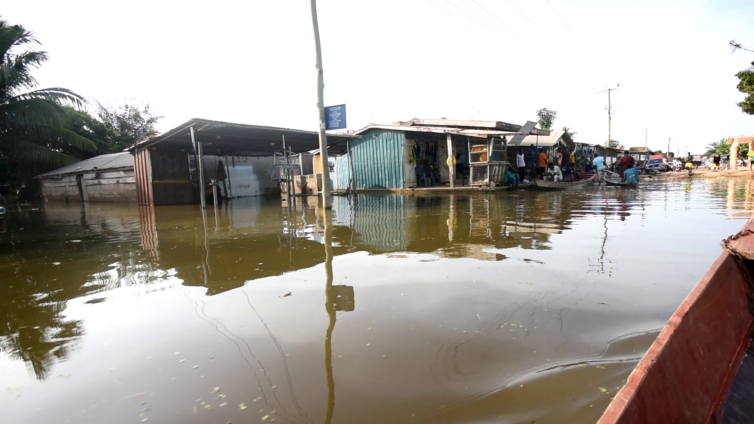This letter article is situated within the context of the flooding that began on October 9, 2023, which is associated with VRA standard operations of spilling excess water to safeguard the integrity of the Akosombo and Kpong Hydropower dam.
On Wednesday, October 5, 2022, hundreds of houses were reported submerged at Oblogo, Tetegu, New Weija, SCC, Tatop, Sampa valley parts of Top Town and American Farm at Ngleshie Amanfro following the opening of the Spill gates of the Weija Dam by the Ghana Water Company Limited (GWCL) which caused the destruction of vehicles, home appliances and personal effects running into millions of Ghana Cedis.
A year on, on October 9, 2023, an even stronger flooding is reported at downstream communities specifically, South, Central and North Tongu, Shai Osudoku, Anlo, Ada East and Asuogyaman after the double-stage spillage of the Akosombo and Kpong Hydropower facilities by the Volta River Authority (VRA) which effect on life and property is not dissimilar from the GWCL spillage in 2022.
In order to strengthen infrastructure monitoring for flood risk reduction in the face of changing global environment associated with climate variability, a three-step solution is recommended.
One strengthened collaboration between the Water Resources Commission (WRC), The Ghana Meteorological Agency (GMET) and The Hydrological Services Authority (HSA) to build an Integrated Hydro Informatics Management System (IHIMS) on future Climate Scenario Models and System Dynamics for qualitative and quantitative monitoring and data analysis.
This requires a basin-wide installation of stream gauge networks and sensors. Then two data exchange between upstream riparian regions and their activities on the system, then three granting water infrastructure institutions system access.
A Flood Early Warning System could be a sub-component within the larger IHIMS. This will strengthen our flood emergency preparedness through the collection of quality data, analysis and forecasts to minimize the scale of damage going forward.
We hope the floods will go away but experience has shown that it is here to stay. So, we need to strengthen our adaptability for an improved disaster management.
Thank you.
About the author; Ing. Mark Benyah is a Water Resources Development and Management Consultant. Email: nakmaben@gmail.com
Latest Stories
-
Government is not recruiting NPP faithful into security agencies – Interior Minister replies Minority Leader
16 mins -
Fake Ghana Card numbers used in registering 17 persons in Pusiga – EC
26 mins -
UK pursues Ghana High Commission for £5M in unpaid London congestion charges for over 20 years
29 mins -
Fuel price hikes: Use special petroleum levy to cushion consumers – Energy Strategist
33 mins -
I’ll defeat corruption in Ghana when elected – Mahama promises
33 mins -
Beyond the Game: How Heart of Lions are fueling Kpando’s economy
45 mins -
2024 polls: Safeguard our peace; Ghanaians don’t want to become refugees – Duncan-Williams to politicians
47 mins -
Cedi depreciation pressures slowdown on improved foreign exchange liquidity; one dollar equals GH¢15.20
51 mins -
2024 polls: Sheikh Aremeyaw warns youth against being used as agents of disruption
56 mins -
Government misused $65m GARID project fund – Ato Forson
1 hour -
Corrupt appointees during my administration will be held accountable – Mahama
1 hour -
Bond market: Total market turnover rebounds to GH¢762.41m
1 hour -
This woman traveled to Paris over 20 years ago and ended up staying for good
1 hour -
Let’s appreciate the progress made under the Fourth Republic – NCCE
1 hour -
Housing Ministry responds to the Minority’s demand for audit into GARID operations
1 hour

